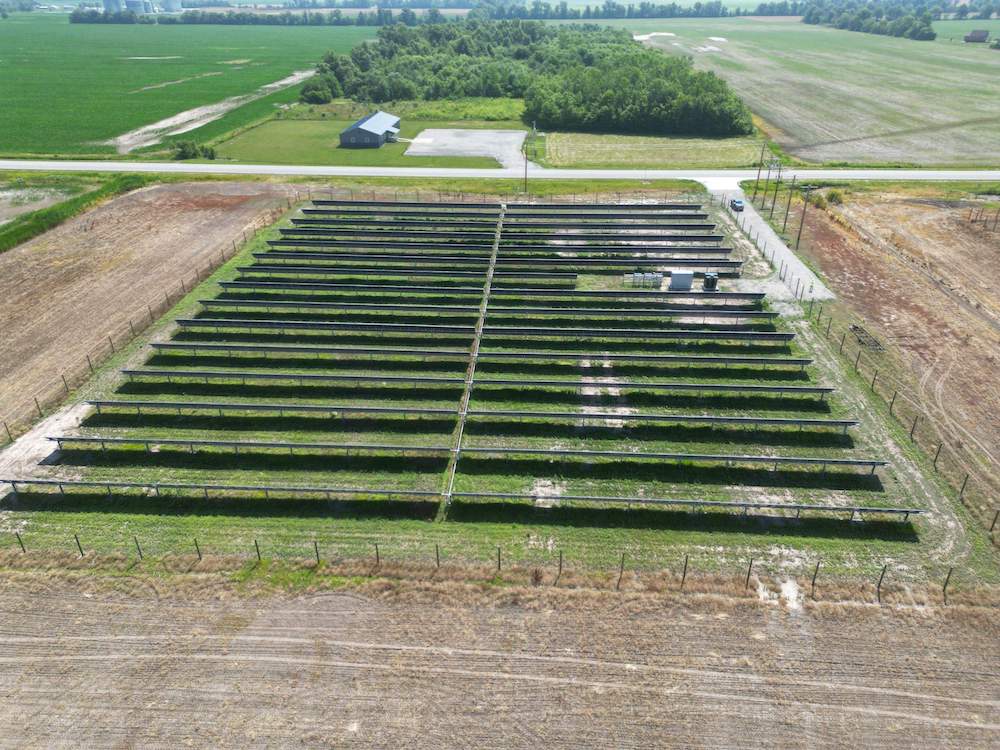Harvesting the Sun: Exploring the Parallels between Solar Energy Production and Farming
July 13, 2023

Have you ever wondered why solar projects are often referred to as “solar farms”? The analogy between solar energy production and traditional farming practices runs deeper than you might think. In this blog, we'll explore the many similarities, highlighting how solar panels cultivate energy from the sun, the benefits of community solar “farming”, and how these renewable energy projects can coexist with traditional agriculture practices, benefiting both farmers and local communities.
Solar and Traditional Farming
It all starts with the sun. In the vast expanse of space, the sun’s rays shine on our planet, bringing about an immense amount of energy – an annual average of 44 quadrillion watts of power, according to NASA. Energy and life as we know it depends entirely on the sun. Modern technologies, including electronic devices that decorate our vehicles, homes, and everyday life, are directly or indirectly powered by the sun. Even fossil fuels result from sun-fed plants and animals that decomposed underneath the earth’s crust over hundreds of thousands of years!
Whereas burning fossil fuels emits harmful greenhouse gases (GHG) that pollute our atmosphere and drive climate change, photovoltaic (PV) panels safely harness this abundant source of clean energy, convert it into electricity, and feed it into the electric grid.
Imagine solar farms as fields of energy, where rows of solar panels stand quietly. These panels absorb sunlight, transforming it into a direct current (DC) that is converted into usable alternating current (AC) electricity. This renewable energy can power homes, businesses, and even entire communities, increasing our country’s energy independence.
The Benefits of Community Solar "Farming"
Community solar farms are referred to by many names, regardless of whether they’re called “distributed solar” or “shared solar”, these solar projects are revolutionizing how hardworking American households and businesses access renewable energy.
The concept is similar to a community garden, where local residents – who often do not have access to suitable land – are empowered to design, build, and maintain a plot of land for growing communal crops. Similarly, local residents, businesses, and organizations can enjoy the cost-saving benefits of a nearby community solar farm by becoming a subscriber. Whereas residents maintain a community garden, community solar gardens are built and maintained by a solar developer, creating good jobs and stimulating the local economy with generous tax benefits. Local solar subscribers can sit back, relax, and enjoy energy bill savings, economic benefits, energy grid infrastructure improvements, and an all-around healthier environment.
Here are a few more of the numerous benefits that shared solar "farming" offers:
-
Job Creation: Like traditional farming, all solar projects create job opportunities in manufacturing, installation, operation, and maintenance, contributing to local economic growth.
-
Cost Savings: Subscribers can avoid the upfront costs of installing an onsite solar array and still support clean energy by subscribing to community solar, resulting in bill-credit savings compared to non-community solar households.
-
Renewable Energy: Construction of a community solar project decreases the need for other forms of power generation, including fossil fuel production, which releases hazardous pollutants.
-
Energy grid resiliency: Community solar gardens fall into a category of development called “distributed generation”, which supports a smaller geographic area than a traditional power plant. This can minimize the scope, length, and ultimately the overall impact of power failures.
Agrivoltaics: When Solar and Traditional Farming Practices Coexist
Solar projects can coexist with and even enhance agricultural practices. Here are some of the ways in which community solar farms and traditional farming can complement one another:
- Barren Land Utilization: The ideal landowner for Pivot and other solar developers views solar as the best option for their land, maximizing its economic and environmental potential. Solar developers often seek out barren land, such as former industrial sites or unused open spaces, ensuring minimal impact on fertile agricultural land. At the end of the lease, the solar developer returns the land in a “ready-to-plant” or “ready-to-develop” condition, ensuring the landowner isn't left with a useless plot after the lease expires. The land will be ready for whatever they decide to do with it next!
- Reliable Income for Farmers: A solar lease provides landowners with a steady source of income for decades while protecting them from the variability and unpredictability that often comes with agricultural and other applications. When leasing property to a solar developer, the farmer enters into a contract that guarantees regular payments for the duration of the lease period, regardless of soil quality, access to water, and seasonal weather patterns. This is a great way to earn income while ensuring the land gets passed down to the next generation – a process known as “land banking.”
- Other Agrivoltaic Practices: By incorporating agrivoltaic practices, solar panels can be seamlessly integrated into farmland, allowing for dual land use. Certain crops can still be grown beneath the panels, providing shade and creating a mutually beneficial relationship between solar energy production and agricultural productivity.
Contact Pivot Energy
Like traditional farms, solar panels harness the sun's energy, producing renewable and clean electricity. Let's embrace the analogy between solar energy and farming as we all seek to cultivate a brighter, more sustainable future. If you're interested in learning more about how solar projects can benefit your community, empower farmers, and contribute to a greener world, contact us today.

.jpg?width=123&name=Angie%20Agrivoltaics%20Award%20(HQ).jpg)


.jpg?width=400&name=Angie%20Agrivoltaics%20Award%20(HQ).jpg)
